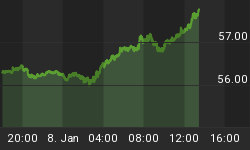Since a high of 3,056 in mid-April, the Shanghai Composite Index has shed 10.3% to close at 2,741 this morning. I have shied away from Chinese equities, but this hammering prompted me to reconsider the situation.

Sources: I-Net Bridge; Plexus Asset Management.
I have pointed out before that the Chinese market players are excellent anticipators of the state of the underlying economy, especially since the latter half of 2009 when the Shanghai Composite Index started to lead China's CFLP manufacturing PMI by approximately one month. From the graph below it is evident to me that the market expected a relatively unchanged manufacturing PMI for May and is currently anticipating a drop to around 52.0 in June from 52.9.

Sources: Li & Fung; CFLP; I-Net Bridge; Plexus Asset Management.
But just how realistic are those expectations? If one looks at the ratio between stocks of major inputs and new orders and the ratio of stocks of finished goods to new orders (please note the reverse scales in the graph below), both ratios point to a drop in the manufacturing PMI in May to between 51.0 and 52.0.

Sources: Li & Fung; CFLP; Plexus Asset Management.

Sources: Li & Fung; CFLP; Plexus Asset Management.
If you argue that that is what the market is currently expecting for June anyway, the market would be correctly priced in line with the weakest seasonal trend that was experienced in 2005.

Sources: Li & Fung; CFLP; Plexus Asset Management
The PMIs in March and April this year were considerably weaker than in previous years, which is my primary concern at this point in time. Add to that the fact that Markit's analysis of their flash Eurozone manufacturing PMI for May indicates that the manufacturing sector in that region currently finds itself in a similar overstocked position. The big question is therefore whether the Japanese are back in the market for goods and services. I do not think so, but the new export orders PMIs of the major economies for May are likely to give a hint next week.
Despite my concerns and pessimism in the short term, it looks if June could herald buying time for Chinese equities during the seasonal lull of the CFLP manufacturing PMI as the normal seasonal strength in the PMI in the third quarter is likely to repeat itself. At that stage Japan should start to recover as well, which will probably rub off on other emerging markets besides China.
The question is probably not whether to buy Chinese equities, but when to do so.
















